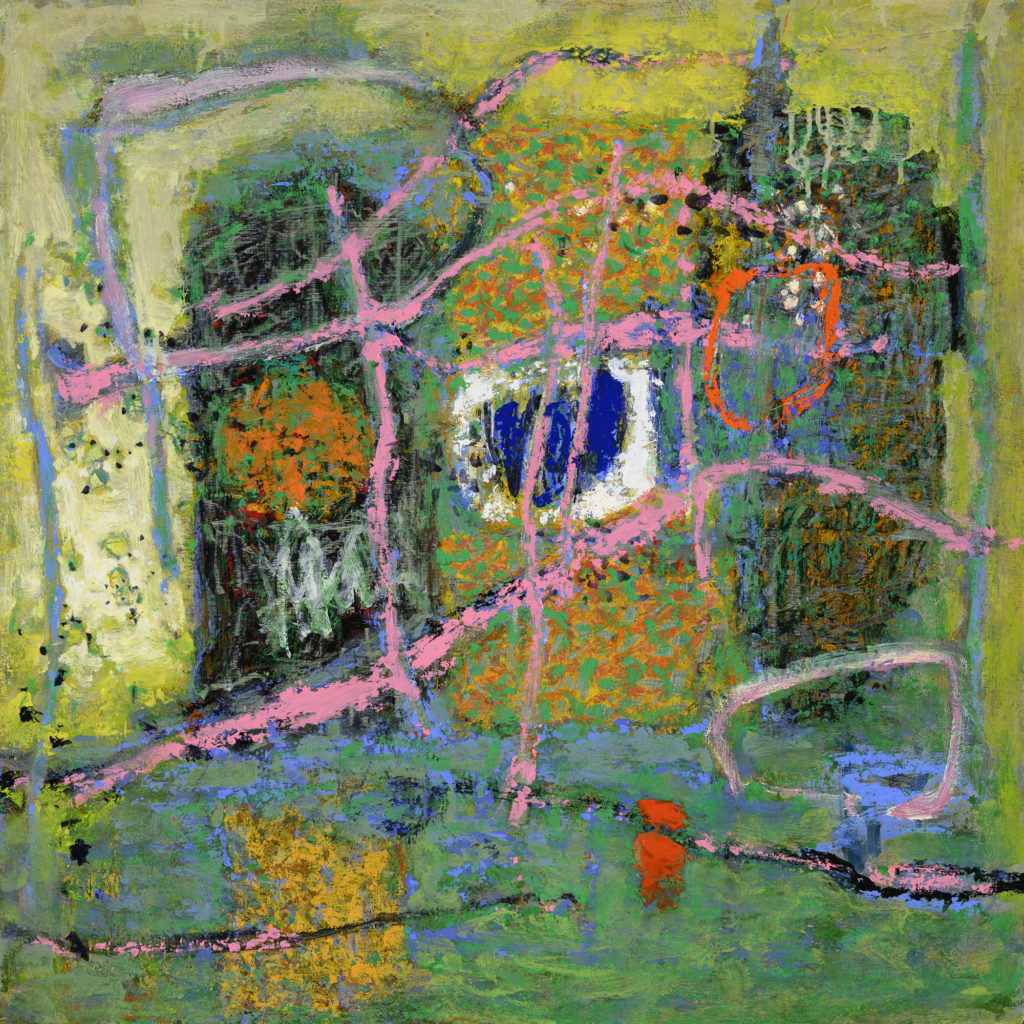
Southwest Art | February 2020 Issue | By Bonnie Gangelhoff
This story was featured in the February 2020 issue of Southwest Art magazine. Get the Southwest Art February 2020 print issue or digital download now–then subscribe to Southwest Art and never miss another story.
STEP INSIDE the Santa Fe, NM, studio of painter Rick Stevens and you may hear a few jazz notes from the great Miles Davis floating through the air. In fact, Stevens likes to compare his creative process to that of a jazz musician: He thrives on improvisation. “I make a mark, a shape, or an application and then respond to it, like how a jazz trio might improvise and respond to each other,” he says. “I look for ways to repeat or vary the elements, gestures, patterns, or rhythms in the marks and textures.”
Unlike many artists who follow an established series of steps in their creative processes, Stevens is comfortable breaking out of the formulaic and working intuitively. In a recent work titled DANCING IN PARADOX, the artist began without a sketch or any preconceived plan. He used oils to express his artistic vision, then later decided to collage burlap into one area, add cold wax, and incorporate gold leaf into some carefully selected spots. “Painting is a dance between the known and the unknown,” he says. “We need novelty, surprise, and spontaneity.”

And so Stevens explores light, texture, color, and space while welcoming painterly accidents. This freewheeling approach allows him to slip seamlessly back and forth over the line that separates abstraction and realism. But whether viewers classify a Stevens painting as abstract or representational, the first thing they should know about the artist is that his muse and constant companion is nature. Even the pieces that don’t start with a specific subject in mind usually evolve into suggestions of the landscape.
Nancy Hunter, who represented Stevens at Hunter Kirkland Contemporary in Santa Fe until she sold the gallery recently, says his paintings defy easy categorization. “Rick creates paintings that are more abstract than traditional landscapes, but more representational than typical abstracts,” Hunter says. “Equally skilled in both his mediums, oils and pastels, Rick uses them to produce luminous, richly colored expanses of the natural world. You can look at and study his paintings for years and still find new ways of seeing them. Somehow they manage to be stimulating and calming at the same time.”

WHILE ASPEN trees in northern New Mexico inspire him these days, as a boy Stevens was attuned to the pine trees in his native Michigan. Growing up in the small town of Sparta, he has fond memories of accompanying his father, a landscape painter, on camping and canoeing trips in the northern Michigan woods. “I remember contentedly sitting for hours behind him, watching the paintings develop,” he recalls. As a child he enjoyed drawing the animals and trees he observed in nearby forests. As he grew older, Stevens often painted alongside his father.
When it came time for college, it seemed natural for him to study art, and he eventually graduated with a fine-arts degree from Aquinas College in Grand Rapids, MI. By that time, Stevens already had local gallery representation and was earning a small income from his paintings. Then in 1984, a few years after graduation, Stevens took an unusual step in his blossoming art career: He “dropped out” for a year, retreating to a cabin in the Michigan woods to practice the spiritual teachings of Swami Amar Jyoti. Jyoti was from India, but he also had an ashram close to Stevens’ home in Michigan.

Stevens was 24 years old at the time. He had no phone, television, or even a small radio in the cabin; his days consisted of painting, yoga, and meditation. “My subject matter was the forest around me and the dappled play of light,” he says. “It was very expansive … until it wasn’t. The experience was formative, but I needed to get back into the world.” The 12-month sojourn cemented his future course as a full-time artist. “It could have led to renunciation, as in becoming a monk, but I was afraid I would have to give up my art,” Stevens says.
“>Read the full article here >